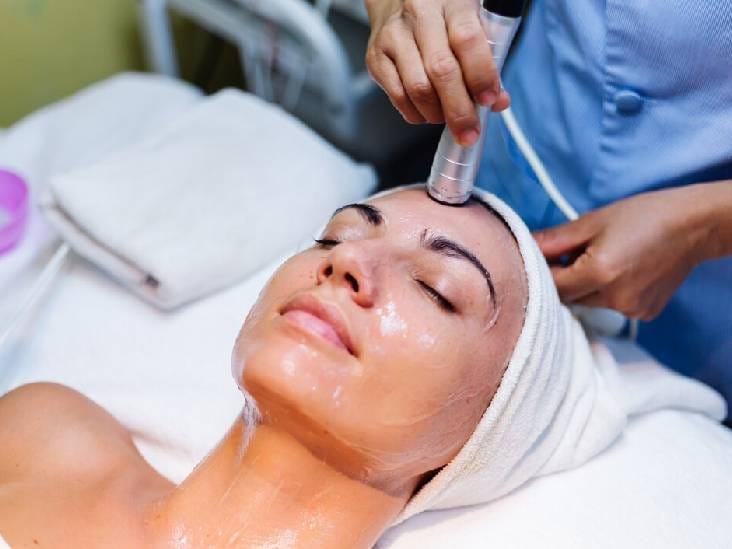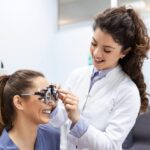Your skin works hard every day shielding you from sun, pollution, dust, sweat, and stress. Over time, that daily wear can translate into clogged pores, uneven texture, dullness, or the occasional flare-up. Professional facials and at-home skincare can help, but not all facials are the same.
In recent years, one device-based treatment which is the HydraFacial (a form of hydradermabrasion) has become a favorite for people who want a deeper clean with very little downtime. Meanwhile, classic salon facials still have a loyal following for relaxation and routine maintenance.
If you live in or around Ahmedabad, you’ve probably seen more clinics and salons adding device-based options to their menus. That’s why people are leaning towards Hydrafacial Treatment in Ahmedabad and comparisons of Hydra Facial Benefits versus regular facials begin. This guide helps you understand how each treatment works, who benefits most, and how to choose confidently.
What is the Difference Between HydraFacial and Traditional Facials?
Traditional facials rely on manual cleansing, exfoliation, steam, extractions, masks, and massage. They’re customizable, relaxing, and good for general upkeep, but results are usually subtle and built with repetition.
HydraFacial (hydradermabrasion) uses a handheld device to cleanse + exfoliate, gently extract debris, and infuse targeted serums in one session often with optional LED or booster steps. It aims for a deeper clean and quick radiance with minimal downtime.
What Exactly is a HydraFacial?
A HydraFacial is a branded, device-based form of hydradermabrasion. In most clinics, the session follows clearly defined steps: a cleanse/exfoliation phase, a gentle chemical peel, vacuum-assisted extractions, targeted serum infusion (for goals like brightening or clarifying), and often LED light therapy designed to deliver a consistent experience each time.
From a dermatology-education standpoint, hydradermabrasion combines microdermabrasion-style resurfacing with fluid infusion. Small clinical studies suggest it can improve texture and overall appearance, and newer open-label data report benefits for active acne when done in a series. Evidence is still growing, but early results are promising.
Difference Between Procedures of Traditional and HydraFacial
Results depend on the therapist’s technique, the products used, and your skin that day. The differences are as follows:
Depth of cleansing
Traditional: Manual extractions can help with blackheads, but over-extraction or aggressive scrubs may irritate sensitive skin.
HydraFacial: Vacuum-assisted extraction is paired with liquid exfoliation, which many people find gentler, especially when you prefer to avoid forceful squeezing.
Recovery and Aftermath
Traditional: Usually no downtime, but some redness can happen after steam/extractions. A microdermabrasion add-on can leave skin pink for a day.
HydraFacial: Often described as “little to no downtime” and most people leave glowy and can go back to daily plans the same day; mild temporary redness or tightness is possible.
Evidence base
Traditional: Microdermabrasion has decades of use; dermatology organizations note improvements in brightness and even tone after a series of treatments.
HydraFacial: Published studies are smaller but report improvements in radiance, texture and acne when done in repeated sessions. More rigorous, larger trials would be helpful.
Who Benefits Most from Each?
If your goal is routine upkeep and relaxation then a classic facial is ideal. It supports cleansing, light exfoliation, hydration, and stress relief, and it’s easy to tailor for sensitivity. Many people schedule these every 4–6 weeks to align with natural skin renewal.
If your goal is quick glow with a deeper clean then HydraFacial stands out for visible luminosity, smoother texture, and refined pores in one sitting, with built-in customization (clarifying, brightening, hydrating, or anti-ageing boosters; LED). Series are often recommended for acne or texture goals.
If you have very sensitive or rosacea-prone skin then proceed thoughtfully. Microdermabrasion and strong mechanical exfoliation may aggravate rosacea; gentler options (soothing facials, cautious hydradermabrasion settings, or purely hydrating steps) are often preferred under professional guidance.
If you’re on or recently used isotretinoin then delay any abrasive procedure, including microdermabrasion; most dermatology guidance suggests waiting months after completion due to scarring risk. Hydradermabrasion should also be deferred until your clinician clears you.
Safety, Side Effects and Sensible Precautions
Traditional facials (incl. microdermabrasion add-ons) can have the following side effects:
- Temporary pinkness
- Mild swelling
- Stinging
- Sun sensitivity
HydraFacial is usually well-tolerated across skin types so mild transient redness/tightness is possible. Sessions are customizable, which helps match sensitivity and goals.
Pregnancy & nursing: Many clinics offer pregnancy-safe facial options, but not every peel or booster is appropriate. Superficial glycolic or lactic peels are generally considered acceptable in pregnancy, while salicylic acid (BHA) and medium-depth options are typically avoided or used with caution. Always confirm with your obstetric provider and tell your aesthetician so they can customize the protocol.
Cost of HydraFacial in India
HydraFacial: In India, typical single-session prices range from about ₹2,000–₹8,000 depending on the city, provider, and add-ons. Session time is commonly 30–60 minutes. In addition to the basic cost of hydrafacial therapy, there are usually additional charges to consider.
It might include expenses for follow-up sessions, essential pre-treatment evaluations, or specific products recommended to maintain the effects following treatment. The extra hydra facial treatment costs may include use of a broad-spectrum sunscreen and customization of the skin treatment or any further skin care procedures.
Traditional facials can start under ₹1,000 for basic clean-ups and scale up for premium options.
How to Choose Between HydraFacial and Traditional Facial?
If you’re not sure which procedure is right for you, consider the following factors:
Define your goal: Quick event glow then try HydraFacial. Monthly maintenance and de-stress then a classic facial fits. Texture or acne over time? Consider a HydraFacial series plus a steady home routine.
Check your skin status: Very reactive or rosacea-prone? Ask for the gentlest settings or choose soothing/hydrating facials without abrasive steps.
Review medicines: Recent isotretinoin or pregnancy/nursing? Get clinician clearance and confirm pregnancy-safe protocols.
Choose the provider carefully: Look for licensed, device-trained professionals who explain each step, tailor serums to your skin, and give aftercare (SPF, actives pause, etc.).
FAQs
Is a HydraFacial safe for sensitive skin?
Generally yes as settings and serums can be adjusted for sensitivity, and many people find the device-assisted extraction gentler than manual squeezing. If you have active eczema, dermatitis, or rosacea flares, ask for a conservative protocol or postpone until calm.
Can I get a HydraFacial during pregnancy?
It depends on the exact serums/peels used. Superficial glycolic or lactic acid steps are typically considered acceptable in pregnancy, but salicylic acid and stronger peels are often avoided. Always clear treatments with your obstetric provider and tell your aesthetician so they can customize safely.
How often should I schedule treatments?
A monthly cadence (every 4–6 weeks) works well for both regular facials and HydraFacials; series may be recommended for acne or texture. Your provider can adjust based on response and skin goals.
Does either treatment help with acne?
Yes, both can be adapted for congested skin. HydraFacial “clarifying” series showed improvements in an open-label study; traditional facials with careful, hygienic extractions can also help. Avoid aggressive manipulation during active, inflamed breakouts.
Which is better before a big event: HydraFacial or a regular facial?
For a same-day glow with minimal risk of post-extraction redness, HydraFacial is popular; book at least a few days ahead if it’s your first time. If your skin is reactive, schedule earlier and request gentler settings.
How long do the results last after HydraFacial?
HydraFacial’s glow commonly lasts several weeks; traditional facials give a refresh that accumulates with consistency. Protect results with SPF and gentle actives between visits.
Conclusion
If you love a calming ritual and steady upkeep, a well-done traditional facial is a reliable staple. If you want a deeper clean, refined look of pores, and fast radiance with minimal interruption to your day, HydraFacial is designed for that, especially with targeted boosters and LED. In Ahmedabad and other Indian cities, you’ll find both options across a wide price range; focus less on the label and more on the training, hygiene, and consultation you receive.



